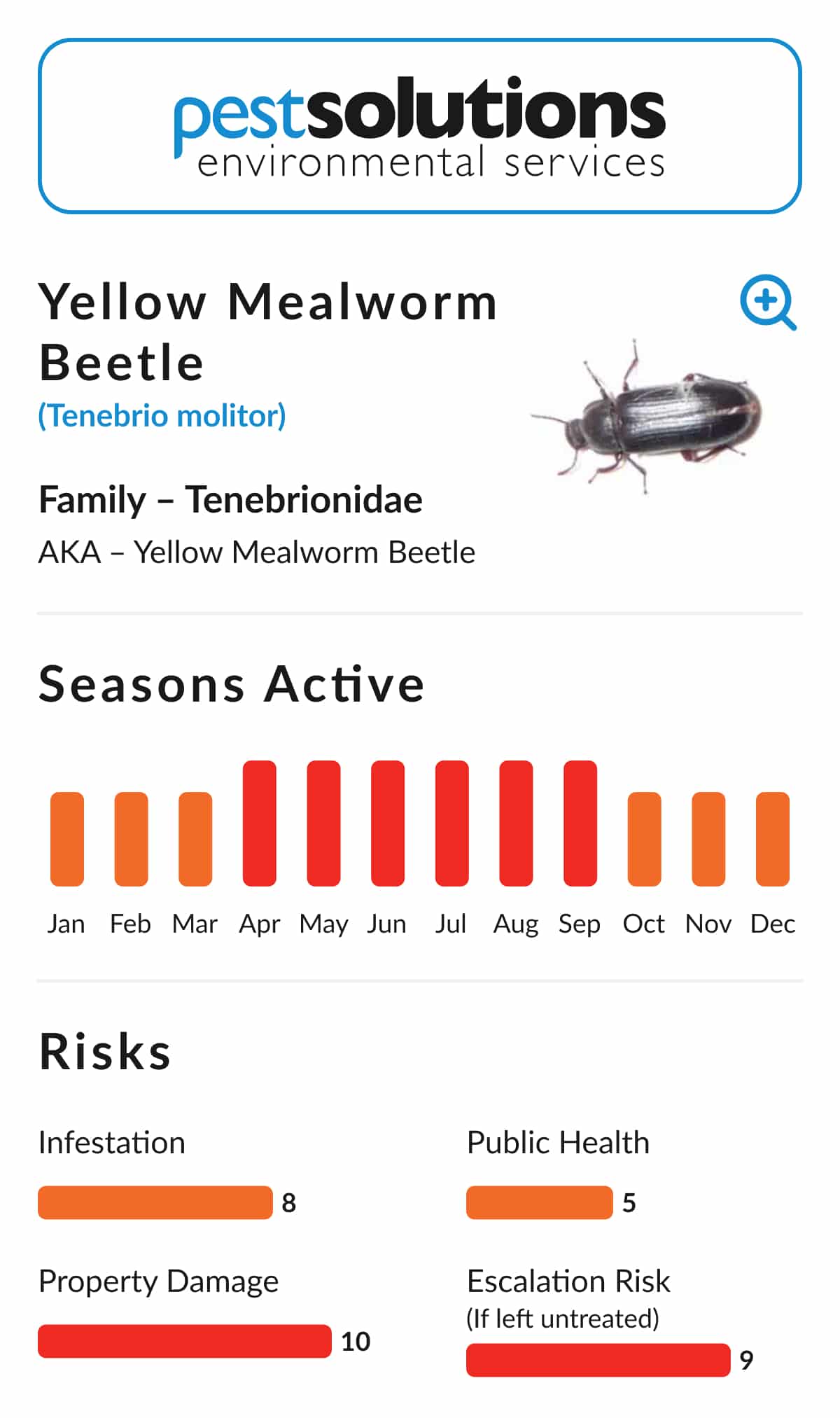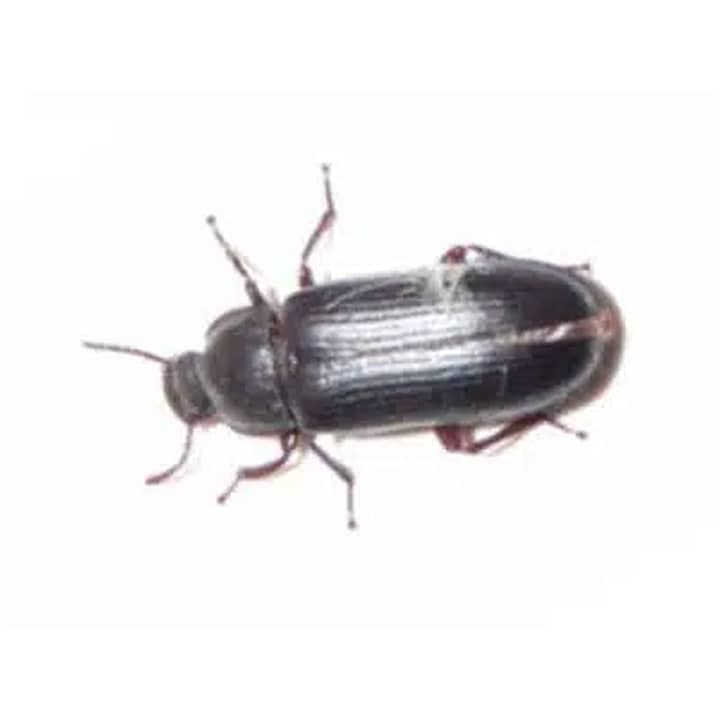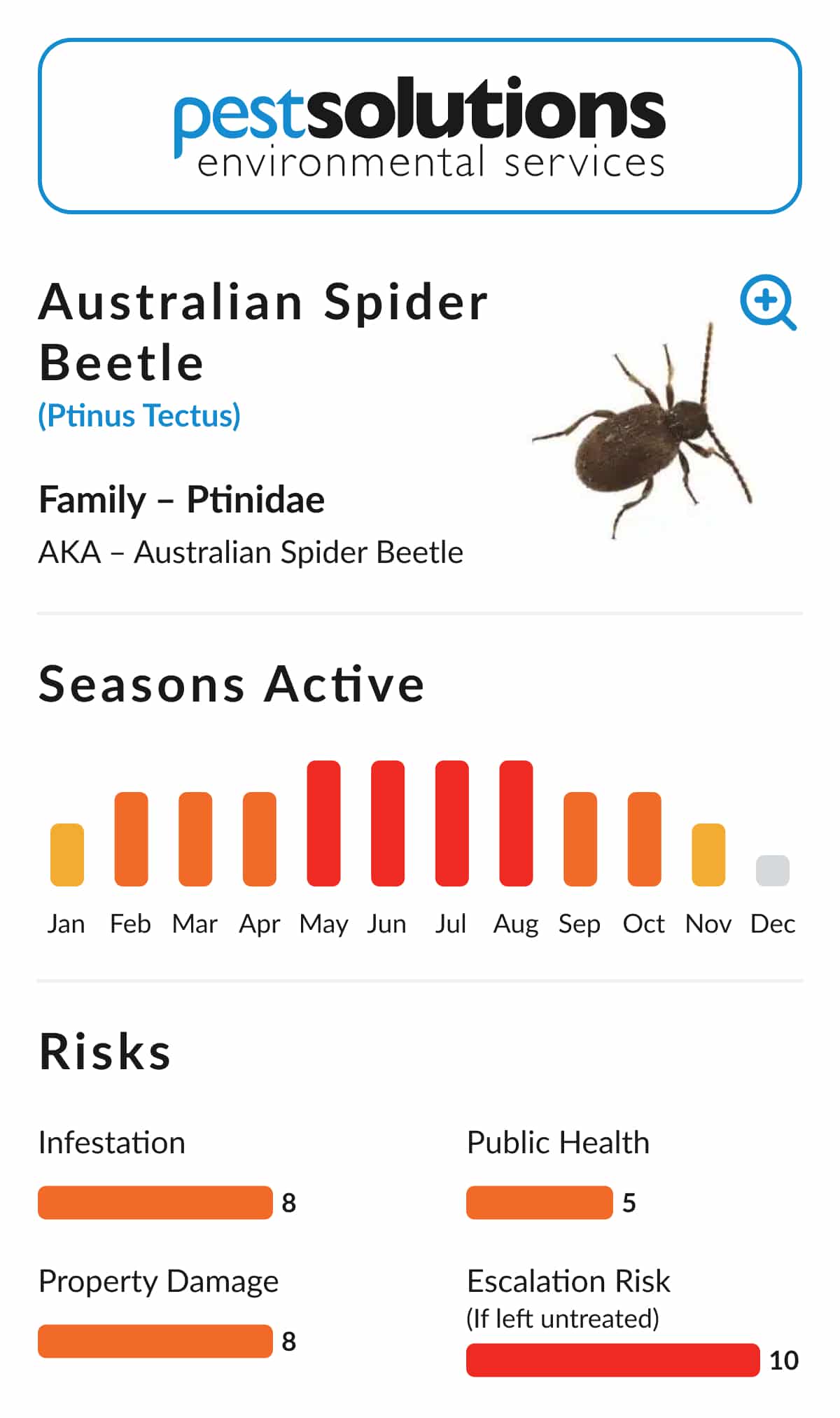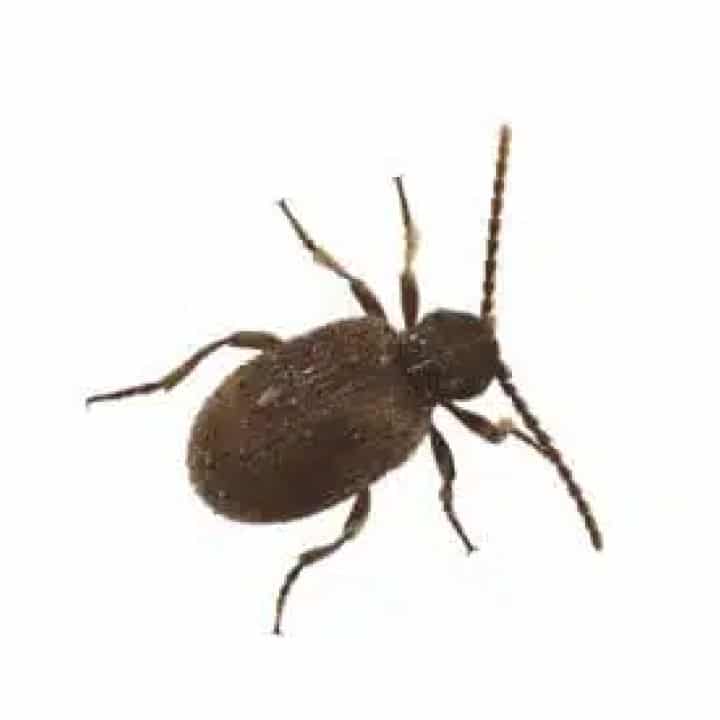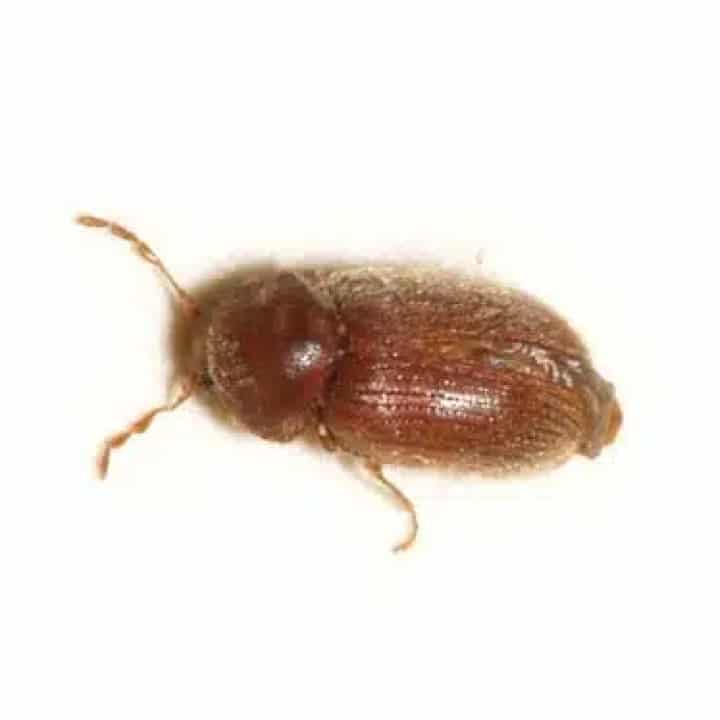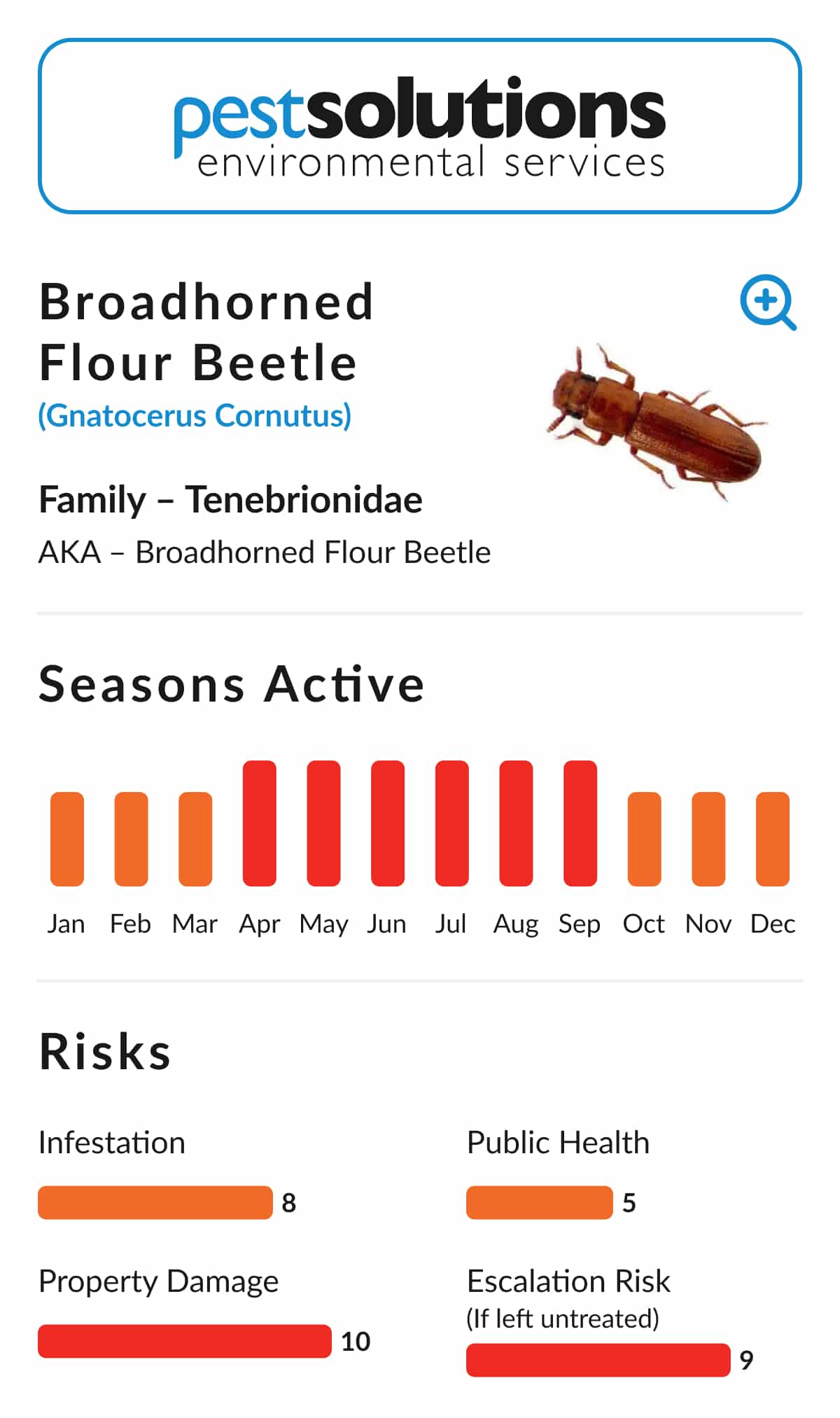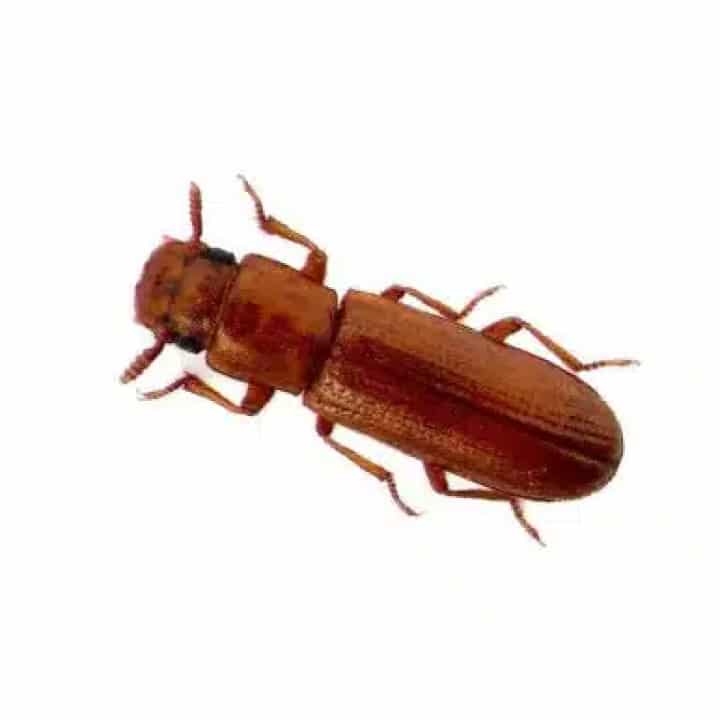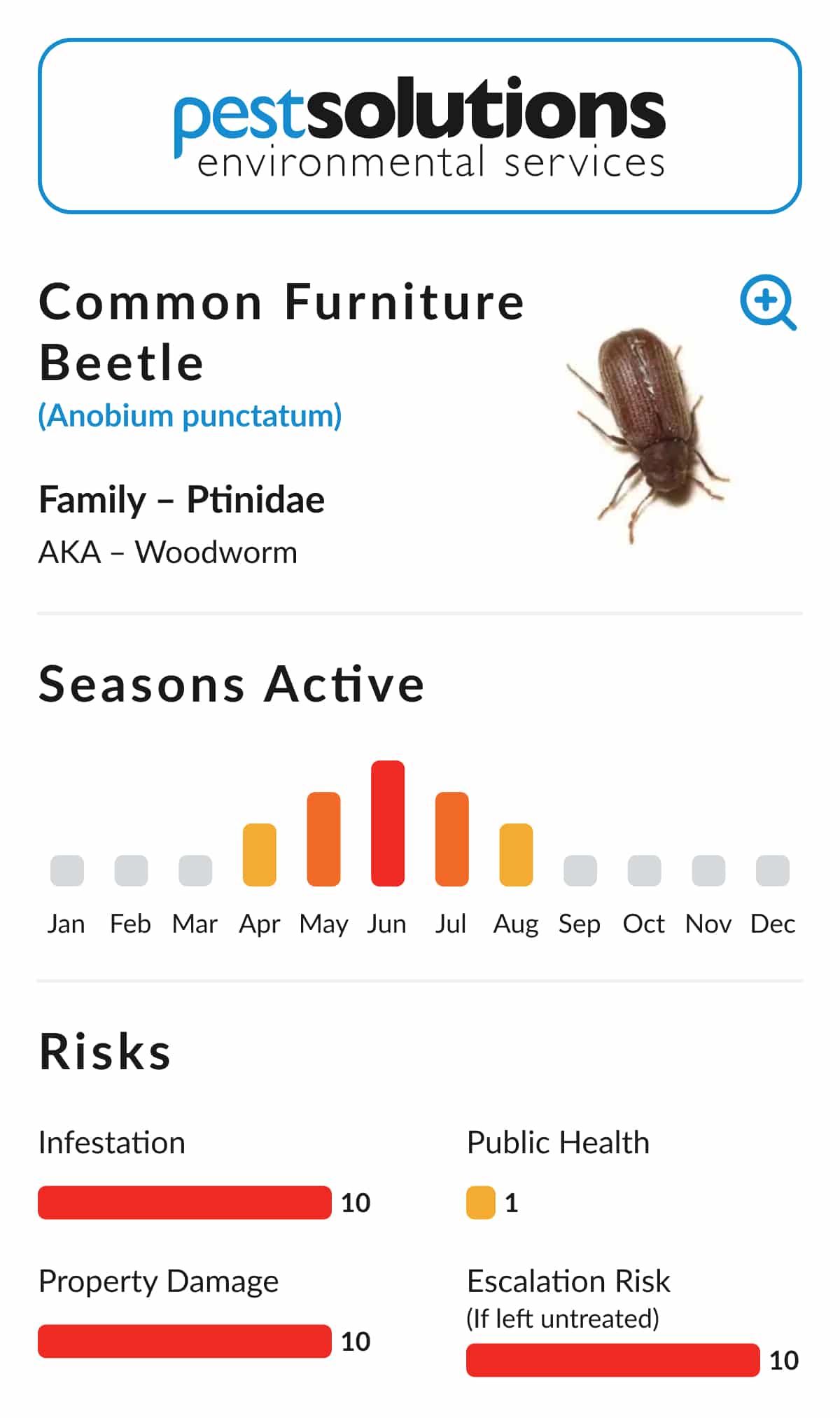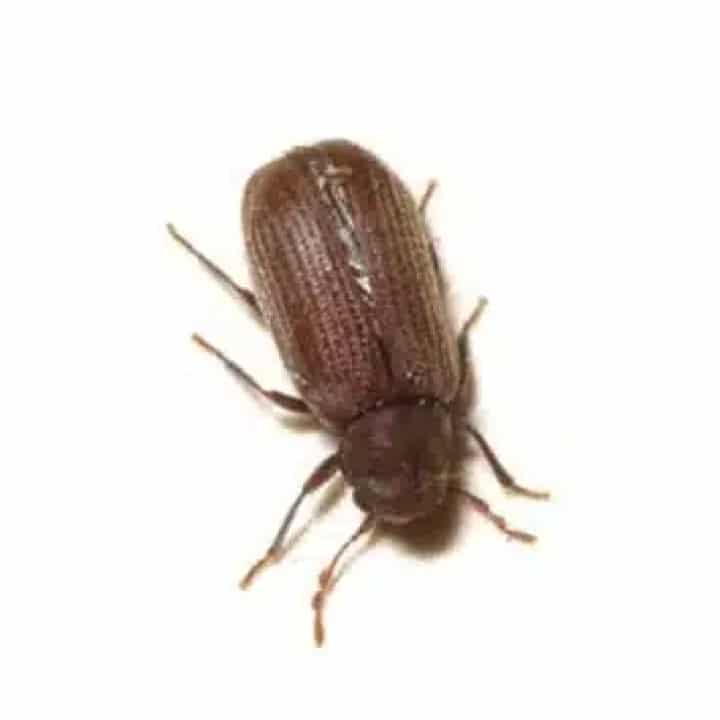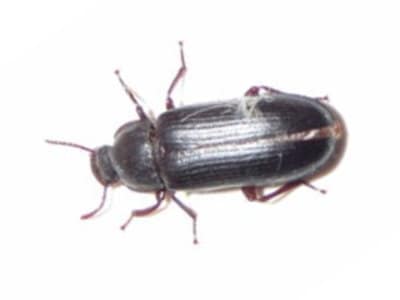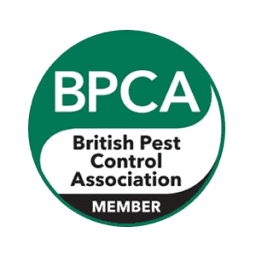Habitat and Distribution – Yellow Mealworm Beetle (Tenebrio molitor)

Biology – Yellow Mealworm Beetle (Tenebrio molitor)
The Yellow Mealworm Beetle has a complete life cycle consisting of egg, larva, pupa, and adult stages. A single female can lay up to 500 eggs in batches, typically on or near a suitable food source. Eggs hatch in around two weeks. The larvae are yellow with brown banding and can grow up to 30 mm in length. They are free-living and feed on a wide range of materials including cereals, dried organic matter, and bird-related debris. Larval development is very slow and may take up to 1.5 years. Pupation occurs away from the food source and is free-form, not within a cocoon. Pupae develop into adults over a period of 3 to 4 weeks. Adult beetles are large (around 15 mm long), dark brown to black in colour, and capable of flight, often entering buildings during the night.
Why They’re a Problem – Yellow Mealworm Beetle (Tenebrio molitor)
The Yellow Mealworm Beetle is typically a minor pest in the UK. Infestations are most often linked to poor hygiene or organic residues in lofts, basements, and wall cavities. While the beetles and larvae do not usually infest stored food, their presence indicates that cleaning and sanitation are required. In some cases, large numbers of beetles can become a nuisance, particularly if adults fly into buildings.
Control and Prevention – Yellow Mealworm Beetle (Tenebrio molitor)
Control of Yellow Mealworm Beetles is straightforward and generally focuses on good hygiene:
-
Remove organic debris such as old birds’ nests, droppings, and accumulated food residues.
-
Clean and inspect attics, cellars, and undisturbed storage spaces regularly.
-
Apply residual insecticides to affected areas if necessary, particularly where adult beetles or larvae are present in numbers.
Prevention is best achieved by maintaining clean, sealed environments and addressing potential harbourage sites for nesting birds and organic waste buildup.
Professional Support – Yellow Mealworm Beetle (Tenebrio molitor)
If you’re noticing beetles or larvae in roof spaces, basements, or similar areas, it may indicate underlying hygiene issues or hidden pest activity. Pest Solutions can help identify the problem and provide tailored treatment solutions.
